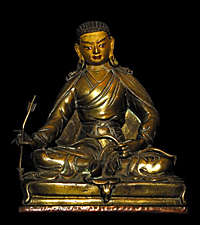
By now it’s a familiar story: the kingdom of Bhutan—which has has become (in the Western romantic imagination) the new Shangri-La, replacing Tibet—does not measure its success in GNP or GDP, but rather in GNH: Gross National Happiness. The term was coined in 1972 by then-king, Jigme Singye Wangchuk. GNH is derived from the following seven indicators:
- Economic Wellness: Indicated via direct survey and statistical measurement of economic metrics such as consumer debt, average income to consumer price index ratio and income distribution
- Environmental Wellness: Indicated via direct survey and statistical measurement of environmental metrics such as pollution, noise and traffic
- Physical Wellness: Indicated via statistical measurement of physical health metrics such as severe illnesses
- Mental Wellness: Indicated via direct survey and statistical measurement of mental health metrics such as usage of antidepressants and rise or decline of psychotherapy patients
- Workplace Wellness: Indicated via direct survey and statistical measurement of labor metrics such as jobless claims, job change, workplace complaints and lawsuits
- Social Wellness: Indicated via direct survey and statistical measurement of social metrics such as discrimination, safety, divorce rates, complaints of domestic conflicts and family lawsuits, public lawsuits, crime rates
- Political Wellness: Indicated via direct survey and statistical measurement of political metrics such as the quality of local democracy, individual freedom, and foreign conflicts.
Bhutan recently assumed the chairmanship of the South Asian Association for Regional Co-operation (SAARC) and the country’s Prime Minister (Bhutan’s first ever) used the opportunity to tell other nations about Bhutan’s use of GNH, and urge them to cast aside the usual crasser, more materialistic measures and give it a shot. (The Sri Lankan journalist Sirohmi Gunesekera took it to heart.)
 GNH now enters the consciousness of Bhutanese from the very beginning of their lives:in school. Voice of America’s Steve Herman reports on meditation as a part of the school curriculum. (Bhutan is about 75% Buddhist and 25% Hindu. There is a significant refugee problem and many accusations of discrimination against non-Buddhist Bhutanese.)
GNH now enters the consciousness of Bhutanese from the very beginning of their lives:in school. Voice of America’s Steve Herman reports on meditation as a part of the school curriculum. (Bhutan is about 75% Buddhist and 25% Hindu. There is a significant refugee problem and many accusations of discrimination against non-Buddhist Bhutanese.)
The GNH concept is winning sympathy, if not endorsements, from those used to measuring development by the economists’ measuring sticks. Talk to U.N. and World Bank experts these days who have spent their careers in the developing world and they will usually acknowledge that enormous growth is not equitable, creating new divisions that fuel further tension. The current upheaval, say in Thailand and Nepal, can be partly attributed to such disparities. The good news for Bhutan is, that by any measuring stick, the country is gaining. Sales of hydro-electric power to India means Bhutan’s gross domestic product has been rising by double digits in recent years. On the U.N. Human Development Index, Bhutan – just a few decades ago considered one of the world’s poorest countries with few schools or hospitals – continues to climb. In the 2009 rankings it is at 132, two spots ahead of its giant neighbor, India and closing in on South Africa.
Bhutan had no TV stations until 1999, and around the same time its capital, Thimphu, got its first traffic light, which was later removed. (A tourism site says: “Later it was removed on king’s orders to save Thimpu’s natural essence and beauty.”) But now, Herman writes, everyone on Thimphu is on Facebook.  Bhutan’s Buddhism is dominated by the Drukpa (“Dragon”) tradition, an offshoot of the Tibetan Kagyu school. The poet and Mahamudra master Drukpa Kunleg (1455-1529) was not the founder of the Drukpa lineage, but he was a major proponent of Buddhism in Bhutan and has a monastery still in operation in the country. Called “The Divine Fool,” Drukpa Kunleg was known for his eccentric ways. His Wikipedia entry paints him as quite a character (but don’t believe everything you read, especially online, and more especially on Wikipedia):
Bhutan’s Buddhism is dominated by the Drukpa (“Dragon”) tradition, an offshoot of the Tibetan Kagyu school. The poet and Mahamudra master Drukpa Kunleg (1455-1529) was not the founder of the Drukpa lineage, but he was a major proponent of Buddhism in Bhutan and has a monastery still in operation in the country. Called “The Divine Fool,” Drukpa Kunleg was known for his eccentric ways. His Wikipedia entry paints him as quite a character (but don’t believe everything you read, especially online, and more especially on Wikipedia):
He was known for his crazy methods of enlightening other beings, mostly women, which earned him the title “The Saint of 5,000 Women”. He taught in exchange for chhaang (barley beer). There is one book in English about him which tells of his strong magic and his immediate and complete charm over women. Women would seek his blessing in the form of sex.
In Bhutanese Bhutan is known as Druk Yul, the Land of the Dragon. Tricycle is in the process of organizing a pilgrimage to the Land of the Dragon in early 2011—we’ll keep you posted! {Images: Taktsang Monastery, a Nyingma monastery (Wikipedia); VOA – Steve Herman; Himalayanart.org]
Thank you for subscribing to Tricycle! As a nonprofit, we depend on readers like you to keep Buddhist teachings and practices widely available.